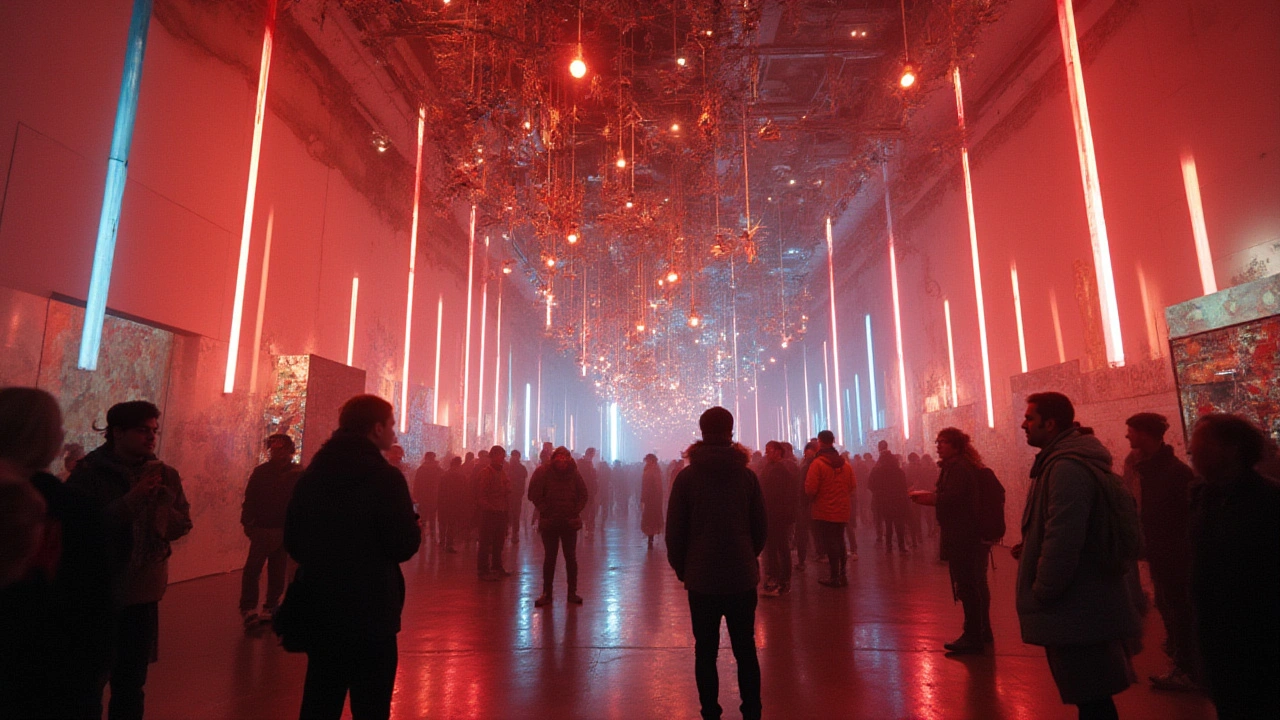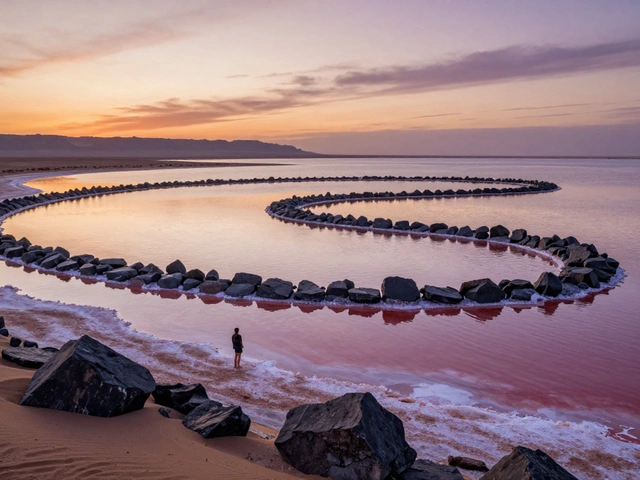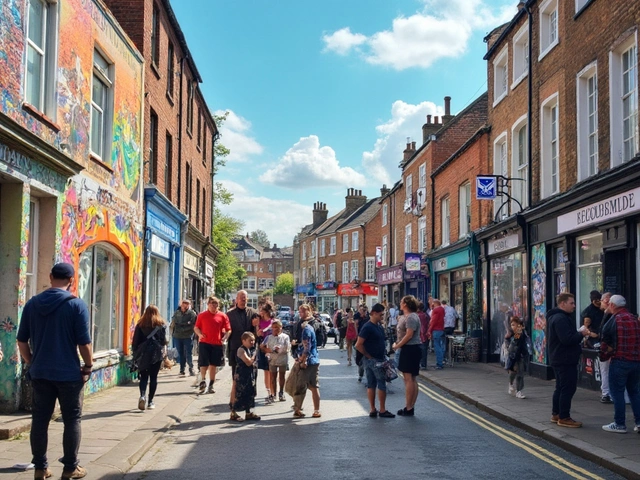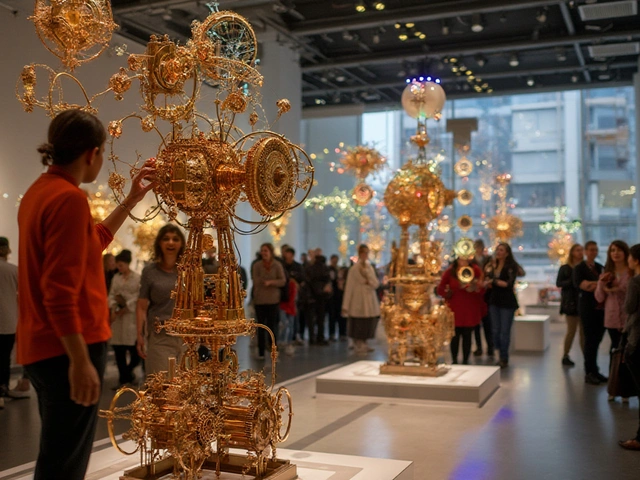Imagine walking into a room and suddenly, you’re not in a room at all—you’re inside a shimmering forest made of discarded soda cans, or a place where the floor feels like jelly and the ceiling glows with a thousand hanging lightbulbs. Installation art doesn’t just sit quietly on walls; it invades your senses, flips your expectations, and asks you to play along. It’s messy, bold, and can be genuinely confusing, but in a way that feels like discovering a secret you’re not sure you’re supposed to tell. You can love it, hate it, or stand slack-jawed in the middle of it. But you can’t exactly ignore it, and that’s kind of the point. Let’s unspool the history, secrets, and wild creativity of installation art—no velvet ropes, no boring lectures, just the raw thrill of art that wants you smack in the middle of the action.
How Installation Art Crashed the Art World Party
Not too long ago, art mostly meant pictures hanging on a wall or statues standing quietly in fancy museums. Then, somewhere around the early 20th century, artists started asking, “Why should art stop at the frame?” Curious rebels like Marcel Duchamp began mixing ordinary stuff—yes, literal urinals—into galleries and declaring, “This is art.” Fast forward a few decades to the 1960s and artists are going completely wild. Think Yayoi Kusama’s infinity rooms where flashing dots fill your eyes and mess with your sense of time, or Allan Kaprow’s “happenings” that turned galleries into chaotic playgrounds. Suddenly, art wasn’t something you just looked at; it was something you stepped into, crawled under, even smelled. No kidding, that’s exactly what Carsten Höller did with his giant mushroom installations you can walk through.
Installation art became a way for artists to grab you by the shoulders and say, “See this, FEEL this, question everything.” It’s the art world’s answer to short attention spans and selfie culture, except it kind of started way before Instagram. Portland, my city, loves this stuff. We have spaces that turn abandoned warehouses into zones where you can stomp on bubble wrap floors, wander through forests of neon zip-ties, or get lost in misty soundscapes that whisper secrets from every corner. It’s art with zero chill—deliberately breaking the rules to make new ones. And it’s not just play; it can tackle politics, climate change, and social justice right in your personal space, sometimes getting people so riled up that installations have sparked protests or been shut down. That’s impact. That’s installation art shaking up the scene.
| Year | Milestone Event | Notable Artist |
|---|---|---|
| 1917 | Duchamp’s “Fountain” turns a urinal into art | Marcel Duchamp |
| 1958 | Klein’s “The Void” empties an entire gallery | Yves Klein |
| 1961 | First “Happening” creates art through audience participation | Allan Kaprow |
| 1965 | “Infinity Mirror Room” debuts | Yayoi Kusama |
| 2010 | “The Weather Project” draws huge crowds at Tate Modern | Olafur Eliasson |
You want facts? Recent polls show that installation art exhibitions at major museums (like MoMA, Tate, and the Guggenheim) consistently beat out paintings in attendance. In 2022, London’s Tate Modern clocked around 340,000 visitors for a single installation piece—Eliasson’s immersive foggy “Weather Project.” That’s not niche; it’s a revolution.
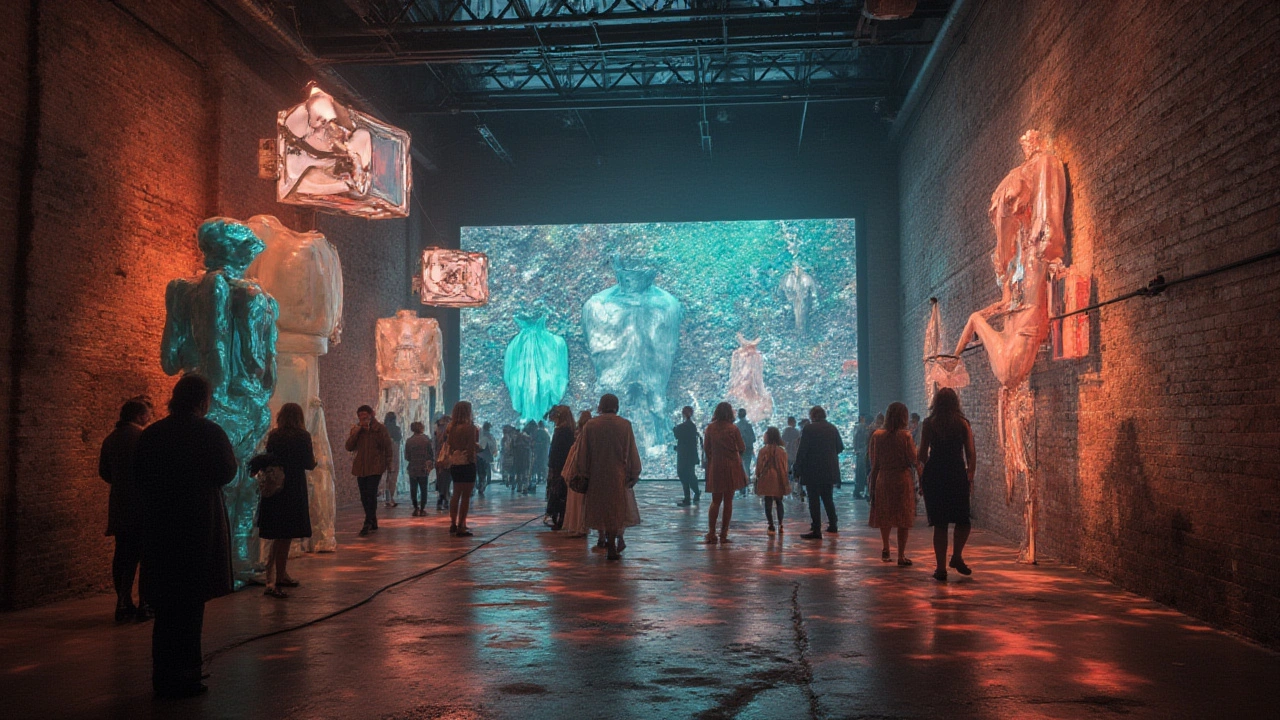
Techniques and Tricks Behind Mind-Blowing Installations
This isn’t amateur hour with glue sticks and poster board. Installation artists invent techniques that would make rocket scientists jealous. You’ll see tech mashups—video walls, AR headsets, surround sound. But it’s not all digital glitz. Earlier works, like Christo and Jeanne-Claude’s wrapped buildings, used swaths of fabric so massive they needed city permits and a small army of helpers.
So, how does an installation actually come together? First, artists dream up a concept—usually a wild “what if” that dares to take over a space. They sketch, prototype, and test with miniature models or 3D renders. Then the build happens, which often feels more like stage production than traditional art. Think scaffolding, lighting rigs, hydraulic pumps, buckets of paint, recycled furniture, and so many extension cords you lose count. There’s choreography for how people will move, triggers for sound and lights, and hidden sensors to respond to footsteps or touch. Interactive installations love audience surprise—walk through a room and trigger bursts of sound, get showered by confetti, or change the space with your movement. TeamLab’s “Borderless” in Tokyo? You literally walk through digital waterfalls and meadows that bloom under your feet, all mapped with futuristic lasers and projection gear.
Safety is huge, especially as installations get bigger and weirder. Permits, weight limits, accessibility for folks with mobility or sensory needs—no one wants to risk stepping through a floor and going viral for the wrong reason. The best installations let you explore danger and delight without actual risk. The secret sauce? Contrast. Shiny against rough, light against shadow, soft sound against sudden thunder. Yin and yang in 3D.
Want to try making your own? Don’t get intimidated. Start by claiming a garage, a backyard, or even your kitchen floor. Collect weird objects you love. Stage them in unexpected ways—it’s all about context. Shine a lamp through bottles, hang colored fabric, create an odd path with shoes or books. Invite friends to walk through and ask how it made them feel. Did you unsettle them? Make them laugh? Bingo, you’re now part of the installation art revolution.
- Tip: Ask for permission if you use shared spaces. Trust me, roommates appreciate it.
- Document everything. Snap photos before, during, and after; video is even better.
- Test at different hours. Daylight and shadows can totally flip your work’s vibe.
- Think multisensory. Add something to smell, listen to, or touch.
- Name your installation with a little mischief. “A Study in Leftover Pizza Boxes,” anyone?
Iconic Works and How to Really Experience Them
So many big names have left their fingerprint on the world with installations it’s hard to keep track. There’s Yayoi Kusama’s infinity mirror rooms—those waiting lists stretch for months, with selfie demand through the roof. Check out James Turrell’s skyspaces, where you sit in hushed silence and stare up at the shifting color of the sky framed by geometric ceilings. Christo and Jeanne-Claude turned cities into art with “The Gates” in Central Park—7,503 saffron-colored curtains blowing through the cold February breeze. Berlin’s “Memorial to the Murdered Jews of Europe” by Peter Eisenman is a brutal, walkable maze of gray stone columns, making viewers feel loss and confusion with every step. And don’t skip Antony Gormley’s “Field,” where a hundred thousand hand-sized clay figures stare at you, blurring together into a crowd that’s both welcoming and creepy.
Why do these experiences stick with us? They make the visitor crucial—your feelings, steps, or choices literally shape how the art lives in memory. You’re not just looking at art, you’re inside it, messing it up or making it complete. Kids interact, elders reflect, and tourists definitely post. Some installations barely last a week; others leave behind stories that swirl for generations. Olafur Eliasson’s “The Weather Project” had folks lying on the floor, staring up at a giant glowing sun, turning London’s Tate into both playground and New Age temple for a season. The world’s largest mirrored infinity room, in Phoenix, leaves people giddy and disoriented with its endless light dots. In Portland, an old warehouse got filled with a time-traveling “forest” of living trees and bird sounds, and people lined up around the block.
If you want to get the most out of installation art, here’s my advice:
- Go solo first, take a slow lap, then again with friends—everyone sees something different.
- Look for artist or curator talks. Hearing the story behind the work changes everything.
- Ditch your phone until after you’ve felt the piece. Trust your senses, not just your camera roll.
- And be curious. Sit, climb, touch (if allowed), sniff, or listen close. This is art begging you to break the old rules.
The revolution is ongoing. Newer artists are using VR goggles, spicy scents, collaborative sound, even edible installations (yes, you can eat the art sometimes). If it gets your heart racing and your brain sparking, that’s installation art doing its job. It’s invading more than galleries—it’s popped up in airports, malls, hotel lobbies, and one memorable parking garage where the art covered ceiling, floor, and all the cars. So next time you stumble into a space that makes you gawk, wince, or start giggling, don’t run for the exit. You’re in the thick of a creative revolution—one that needs you as much as you need the thrill of being truly shaken up.

